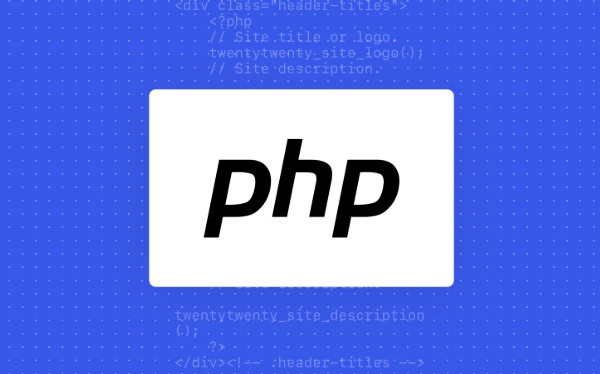PHP preprocessing statements safely execute queries by separating SQL logic from data. 1. Use placeholders (such as ? or :name) instead of directly embedding user input; 2. bind values ??and then execute to ensure that the input is correctly escaped to prevent SQL injection; 3. Improve performance when executing similar queries multiple times; 4. Make the code clearer and easier to maintain; 5. Common errors include splicing user input directly into SQL, ignoring error handling, and replacing representative names or column names with placeholders.

PHP prepared statements are a way to safely execute SQL queries by separating SQL logic from the data being passed into it. This helps prevent SQL injection attacks and makes your database interactions more efficient, especially when running similar queries multiple times with different values.

What Exactly Is a Prepared Statement?
A prepared statement is like a template for an SQL query that you define once and then fill in with actual values ??later. Instead of directly embedding user input into a query string, you use placeholders (like ? or :name ) and bind values ??to them before execution.
For example, instead of writing:

$sql = "SELECT * FROM users WHERE id = " . $_GET['id'];
You'd do something like:
$stmt = $pdo->prepare("SELECT * FROM users WHERE id = ?");
$stmt->execute([$_GET['id']]);This ensures that the value is properly escaped and treated as data, not part of the SQL command.

Why You Should Use Them
There are a few solid reasons why prepared statements are the go-to method for handling dynamic SQL in PHP:
- Security First : They automatically handle escaping input, which is the main defense against SQL injection.
- Performance Boost : If you reuse the same prepared statement multiple times with different values, it's faster than parsing and compiling the whole query each time.
- Cleaner Code : Separating SQL structure from data just makes things easier to read and maintain.
Even if you're building a small app or prototype, using prepared statements is a good habit to form early.
How to Use Prepared Statements in PHP
There are two common ways to use prepared statements in PHP: using named placeholders or positional placeholders.
With Named Placeholders:
$stmt = $pdo->prepare('INSERT INTO users (name, email) VALUES (:name, :email)'); $stmt->execute(['name' => 'John', 'email' => 'john@example.com']);
With Positional Placeholders:
$stmt = $pdo->prepare('INSERT INTO users (name, email) VALUES (?, ?)'); $stmt->execute(['John', 'john@example.com']);
Both approaches work well. Named placeholders can be easier to manage when there are lots of values, since you can clearly see what each one representations.
Also, after executing a SELECT query, you can fetch results just like normal:
$stmt = $pdo->prepare("SELECT name FROM users WHERE id = ?");
$stmt->execute([1]);
$user = $stmt->fetch();Common Mistakes to Avoid
It's easy to fall into a few traps when first working with prepared statements.
- ? Don't mix raw user input directly into your SQL string even if you're using prepare/execute — the safety only comes when you bind values ??through execute.
- ? Don't forget to check for errors — especially in production code, always handle possible failures gracefully.
- ? Always use parameter binding for dynamic values ??— this includes numbers, strings, everything.
One thing people sometimes overlook is that placeholders can't be used for table names or column names. Those have to be hardcoded or carefully whitelisted in your code.
Basically that's it.
The above is the detailed content of What are PHP prepared statements. For more information, please follow other related articles on the PHP Chinese website!

Hot AI Tools

Undress AI Tool
Undress images for free

Undresser.AI Undress
AI-powered app for creating realistic nude photos

AI Clothes Remover
Online AI tool for removing clothes from photos.

Clothoff.io
AI clothes remover

Video Face Swap
Swap faces in any video effortlessly with our completely free AI face swap tool!

Hot Article

Hot Tools

Notepad++7.3.1
Easy-to-use and free code editor

SublimeText3 Chinese version
Chinese version, very easy to use

Zend Studio 13.0.1
Powerful PHP integrated development environment

Dreamweaver CS6
Visual web development tools

SublimeText3 Mac version
God-level code editing software (SublimeText3)

Hot Topics
 How to get the current session ID in PHP?
Jul 13, 2025 am 03:02 AM
How to get the current session ID in PHP?
Jul 13, 2025 am 03:02 AM
The method to get the current session ID in PHP is to use the session_id() function, but you must call session_start() to successfully obtain it. 1. Call session_start() to start the session; 2. Use session_id() to read the session ID and output a string similar to abc123def456ghi789; 3. If the return is empty, check whether session_start() is missing, whether the user accesses for the first time, or whether the session is destroyed; 4. The session ID can be used for logging, security verification and cross-request communication, but security needs to be paid attention to. Make sure that the session is correctly enabled and the ID can be obtained successfully.
 PHP get substring from a string
Jul 13, 2025 am 02:59 AM
PHP get substring from a string
Jul 13, 2025 am 02:59 AM
To extract substrings from PHP strings, you can use the substr() function, which is syntax substr(string$string,int$start,?int$length=null), and if the length is not specified, it will be intercepted to the end; when processing multi-byte characters such as Chinese, you should use the mb_substr() function to avoid garbled code; if you need to intercept the string according to a specific separator, you can use exploit() or combine strpos() and substr() to implement it, such as extracting file name extensions or domain names.
 How do you perform unit testing for php code?
Jul 13, 2025 am 02:54 AM
How do you perform unit testing for php code?
Jul 13, 2025 am 02:54 AM
UnittestinginPHPinvolvesverifyingindividualcodeunitslikefunctionsormethodstocatchbugsearlyandensurereliablerefactoring.1)SetupPHPUnitviaComposer,createatestdirectory,andconfigureautoloadandphpunit.xml.2)Writetestcasesfollowingthearrange-act-assertpat
 How to split a string into an array in PHP
Jul 13, 2025 am 02:59 AM
How to split a string into an array in PHP
Jul 13, 2025 am 02:59 AM
In PHP, the most common method is to split the string into an array using the exploit() function. This function divides the string into multiple parts through the specified delimiter and returns an array. The syntax is exploit(separator, string, limit), where separator is the separator, string is the original string, and limit is an optional parameter to control the maximum number of segments. For example $str="apple,banana,orange";$arr=explode(",",$str); The result is ["apple","bana
 JavaScript Data Types: Primitive vs Reference
Jul 13, 2025 am 02:43 AM
JavaScript Data Types: Primitive vs Reference
Jul 13, 2025 am 02:43 AM
JavaScript data types are divided into primitive types and reference types. Primitive types include string, number, boolean, null, undefined, and symbol. The values are immutable and copies are copied when assigning values, so they do not affect each other; reference types such as objects, arrays and functions store memory addresses, and variables pointing to the same object will affect each other. Typeof and instanceof can be used to determine types, but pay attention to the historical issues of typeofnull. Understanding these two types of differences can help write more stable and reliable code.
 Using std::chrono in C
Jul 15, 2025 am 01:30 AM
Using std::chrono in C
Jul 15, 2025 am 01:30 AM
std::chrono is used in C to process time, including obtaining the current time, measuring execution time, operation time point and duration, and formatting analysis time. 1. Use std::chrono::system_clock::now() to obtain the current time, which can be converted into a readable string, but the system clock may not be monotonous; 2. Use std::chrono::steady_clock to measure the execution time to ensure monotony, and convert it into milliseconds, seconds and other units through duration_cast; 3. Time point (time_point) and duration (duration) can be interoperable, but attention should be paid to unit compatibility and clock epoch (epoch)
 How to pass a session variable to another page in PHP?
Jul 13, 2025 am 02:39 AM
How to pass a session variable to another page in PHP?
Jul 13, 2025 am 02:39 AM
In PHP, to pass a session variable to another page, the key is to start the session correctly and use the same $_SESSION key name. 1. Before using session variables for each page, it must be called session_start() and placed in the front of the script; 2. Set session variables such as $_SESSION['username']='JohnDoe' on the first page; 3. After calling session_start() on another page, access the variables through the same key name; 4. Make sure that session_start() is called on each page, avoid outputting content in advance, and check that the session storage path on the server is writable; 5. Use ses
 How does PHP handle Environment Variables?
Jul 14, 2025 am 03:01 AM
How does PHP handle Environment Variables?
Jul 14, 2025 am 03:01 AM
ToaccessenvironmentvariablesinPHP,usegetenv()orthe$_ENVsuperglobal.1.getenv('VAR_NAME')retrievesaspecificvariable.2.$_ENV['VAR_NAME']accessesvariablesifvariables_orderinphp.iniincludes"E".SetvariablesviaCLIwithVAR=valuephpscript.php,inApach






